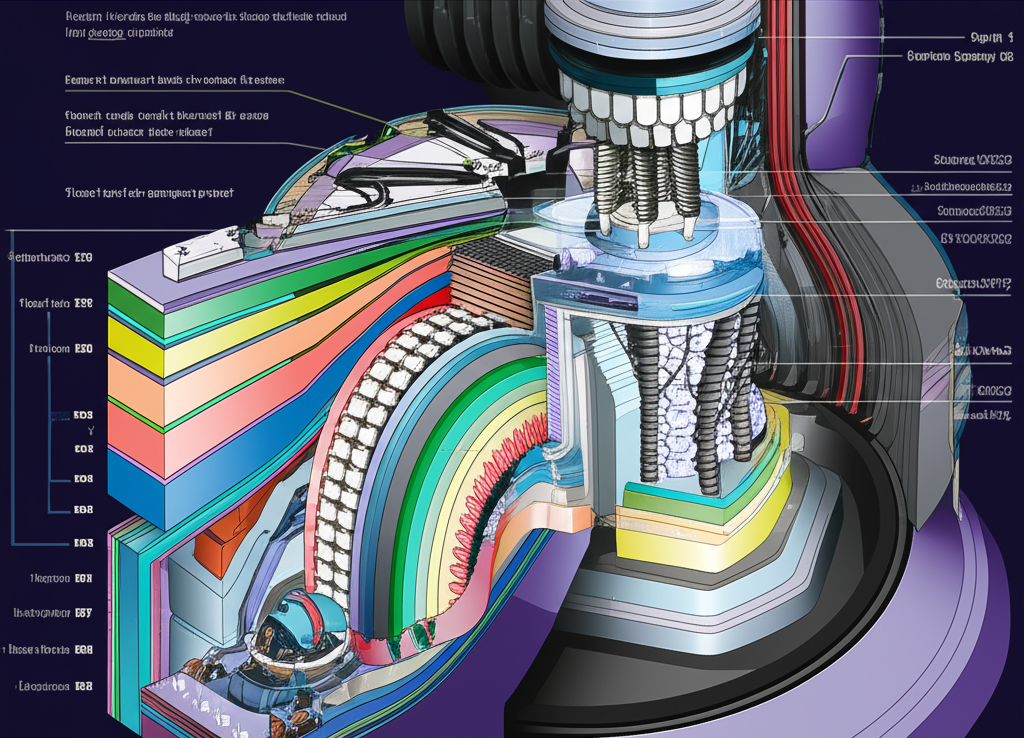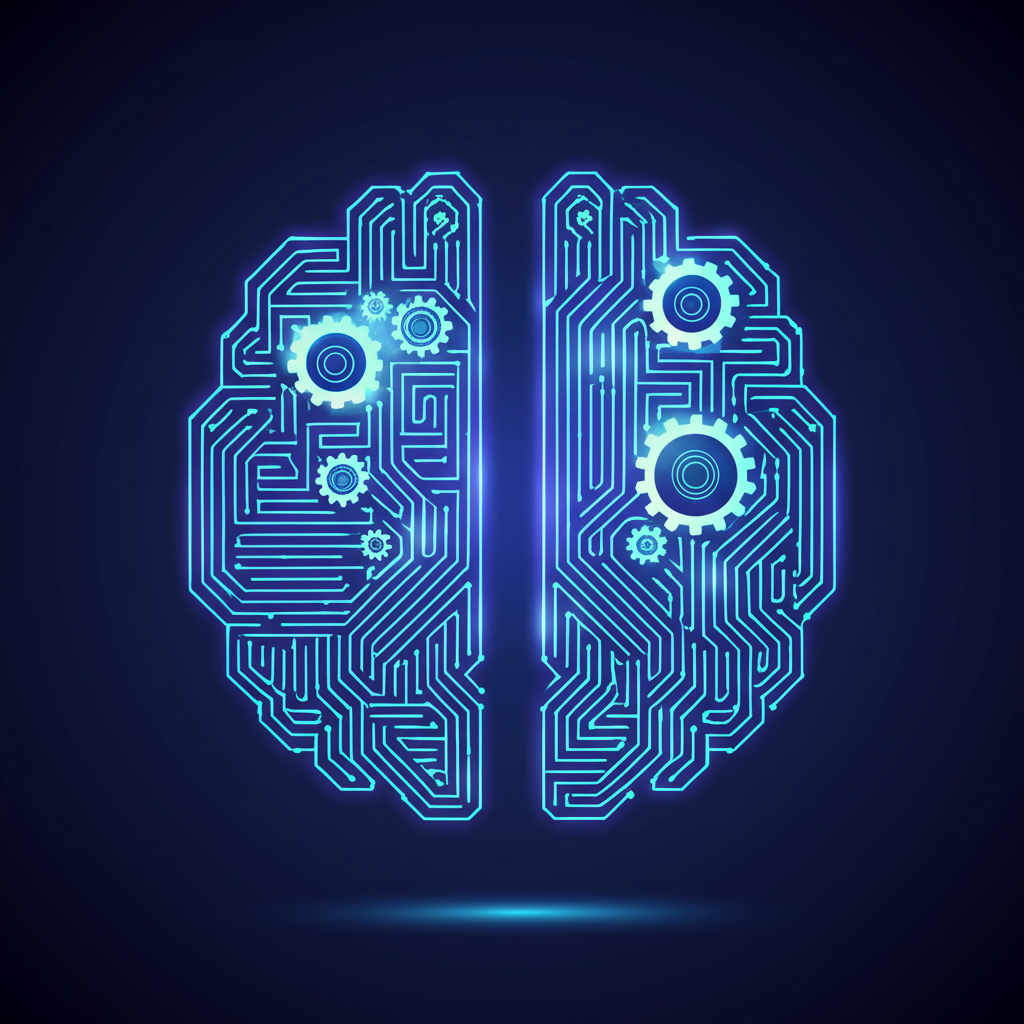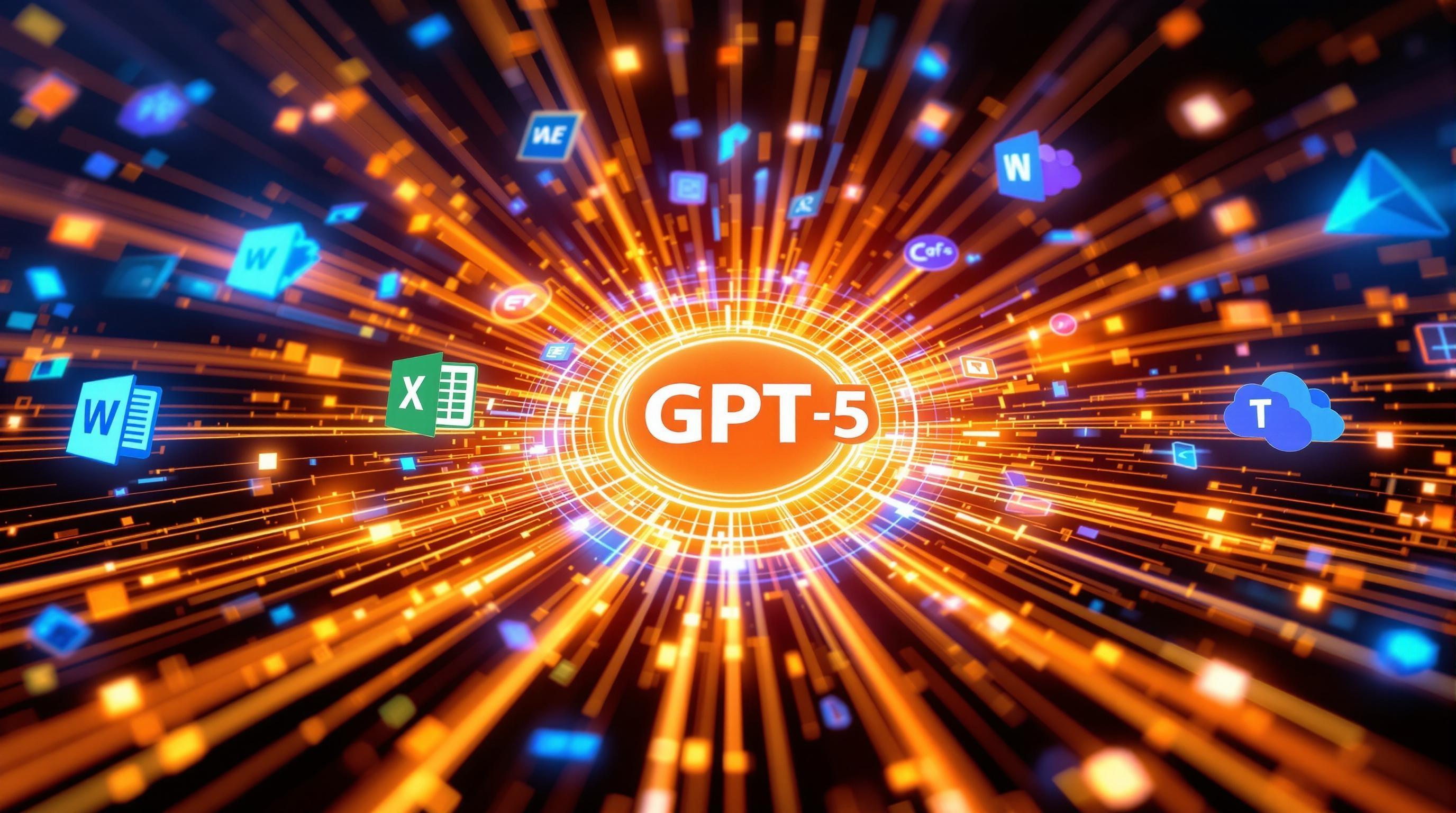Gemini Ultra vs GPT-4: A Deep Dive into AI Reasoning, Capabilities and the Future of LLMs

The AI Arena: Gemini Ultra and GPT-4 Clash for Supremacy
In the ever-evolving world of artificial intelligence, two titans stand tall: [Gemini Ultra](https://www.best-ai-tools.org/tool/google-gemini) and [GPT-4](https://www.best-ai-tools.org/tool/chatgpt). These leading AI models represent the pinnacle of current AI technology, showcasing the astounding progress made in recent years. The advancements in AI are happening at breakneck speed, making models like Gemini Ultra and GPT-4 critical in shaping our technological future. We are in a highly competitive landscape, where tech companies are in an ongoing quest for superior AI, and this competition pushes the boundaries of what's possible.
At the heart of these advancements are large language models (LLMs). LLMs are sophisticated AI algorithms trained on massive datasets of text and code, enabling them to understand, generate, and manipulate human language with remarkable fluency. Their importance lies in their ability to automate tasks, enhance communication, and unlock new possibilities across various industries. This sets the stage for a detailed comparison of Gemini Ultra and GPT-4, exploring their unique capabilities and how they stack up against each other.
Under the Hood: Architectural Differences and Key Innovations

Let's delve into the architectural differences that set these AI titans apart. [GPT-4](https://www.best-ai-tools.org/tool/chatgpt), building upon the groundbreaking transformer model, boasts a massive, though undisclosed, parameter count. This complex neural network was trained on a vast dataset of text and code and refined through extensive human feedback, enabling it to excel at understanding context, generating coherent text, and even demonstrating reasoning abilities. Its strengths lie in its ability to process language and generate human-quality content. Now, consider [Google Gemini](https://www.best-ai-tools.org/tool/google-gemini) Ultra. One of its key differentiators is its multimodal architecture. Unlike unimodal approaches that focus on a single type of data, Gemini Ultra is designed to natively integrate text, images, audio, and video. This means it can process and understand information from various sources simultaneously, leading to a more holistic understanding of the world. Google has emphasized its focus on training data, specifically tailored for multimodal understanding, and reinforcement learning techniques to optimize Gemini Ultra's performance. The significance of multimodal AI is that it mirrors how humans perceive and interact with the world. We don't just rely on text; we use our senses to gather information. By integrating multiple modalities, [Google Gemini](https://www.best-ai-tools.org/tool/google-gemini) aims to achieve a deeper level of understanding and reasoning. One significant difference to note between [GPT-4](https://www.best-ai-tools.org/tool/chatgpt) and [Google Gemini](https://www.best-ai-tools.org/tool/google-gemini) Ultra is the context window size. Gemini models have demonstrated substantially larger context windows, allowing them to retain and process more information within a single interaction. This capability is crucial for tasks that require understanding long and complex documents or conversations.
Common Sense Reasoning: Navigating the Nuances of Everyday Knowledge
Common sense reasoning, the ability to understand and apply everyday knowledge to solve problems, is a critical benchmark for advanced AI. It's about more than just reciting facts; it's about understanding context, making inferences, and navigating the ambiguities of the real world. When we compare [GPT-4](https://www.best-ai-tools.org/tool/chatgpt) and [Google Gemini](https://www.best-ai-tools.org/tool/google-gemini) Ultra in answering common sense questions, some interesting nuances emerge.
While both models demonstrate impressive capabilities, [Gemini](https://www.best-ai-tools.org/tool/google-gemini) Ultra often shows a potential edge, particularly in situations requiring multimodal understanding. For instance, if a question involves interpreting a visual cue or connecting information from different sources, [Gemini](https://www.best-ai-tools.org/tool/google-gemini)'s ability to process images and text simultaneously gives it an advantage. Consider a scenario: “A photo shows a person holding an umbrella indoors. What is likely happening?” [Gemini](https://www.best-ai-tools.org/tool/google-gemini) might infer a leaky roof or a staged photo shoot more readily than [GPT-4](https://www.best-ai-tools.org/tool/chatgpt), which primarily relies on textual input.
However, it's not a clean sweep. [GPT-4](https://www.best-ai-tools.org/tool/chatgpt) often excels in scenarios demanding complex logical deductions or intricate understanding of social dynamics. For example, when presented with hypothetical social dilemmas, [GPT-4](https://www.best-ai-tools.org/tool/chatgpt) can sometimes provide more nuanced and contextually appropriate responses. We need to address the ever-present question of factual accuracy and 'hallucinations'. Both models can occasionally generate incorrect or nonsensical answers, highlighting the ongoing challenge of ensuring reliability. This is explored further in our [AI News](https://www.best-ai-tools.org/ai-news) section, which covers the constant evolution of [AI tools](https://www.best-ai-tools.org/ai-news/the-essential-guide-to-ai-tools-what-they-are-and-how-to-use-them).
It's also important to note the impact of prompt engineering techniques, such as chain-of-thought prompting, on reasoning accuracy. By explicitly guiding the model to break down a problem into smaller steps, we can often improve its ability to arrive at a correct answer. Experiments have shown that both [GPT-4](https://www.best-ai-tools.org/tool/chatgpt) and [Gemini](https://www.best-ai-tools.org/tool/google-gemini) Ultra benefit from this approach, suggesting that even the most advanced [LLMs](https://www.best-ai-tools.org/learn/ai-fundamentals) still require careful prompting to unlock their full potential.
Logical Reasoning: Applying Logic and Solving Complex Problems

Logical reasoning is the bedrock of effective problem-solving, enabling AI models to analyze information, identify patterns, and draw valid conclusions. It's the ability to apply formal rules and principles to arrive at a correct or justifiable answer. When comparing [GPT-4](https://www.best-ai-tools.org/tool/chatgpt) and Gemini Ultra in this crucial area, we see distinct approaches and capabilities. Both models strive to emulate human-like reasoning, but their success varies across different types of logical tasks.
[GPT-4](https://www.best-ai-tools.org/tool/chatgpt) and Gemini Ultra's performance can be assessed based on deductive, inductive, and abductive reasoning. Deductive reasoning, which involves drawing certain conclusions from given premises, showcases their ability to follow strict logical rules. Inductive reasoning, where generalizations are made from specific observations, tests their pattern recognition and inference skills. Abductive reasoning, or inference to the best explanation, challenges them to generate hypotheses and consider multiple possibilities. Knowledge graphs play a pivotal role in enhancing logical inference. By structuring information in a network of entities and relationships, these graphs provide a framework for AI models to navigate complex domains and make informed deductions. The integration of knowledge graphs allows [GPT-4](https://www.best-ai-tools.org/tool/chatgpt) and Gemini Ultra to access and utilize relevant information, improving their reasoning accuracy and efficiency.
However, even with these advancements, both models have limitations. They can struggle with complex logical problems that require extensive background knowledge, nuanced understanding, or creative problem-solving. Furthermore, they are not immune to logical fallacies and reasoning errors. For example, they might exhibit confirmation bias, selectively attending to information that confirms pre-existing beliefs, or commit the fallacy of composition, assuming that what is true of the parts is necessarily true of the whole. Identifying and mitigating these errors is a key area of ongoing research and development in the field of AI reasoning.
Mathematical Reasoning: Cracking the Code of Numbers and Equations
Mathematical reasoning is a critical benchmark for evaluating the capabilities of large language models (LLMs). It tests their ability to not only perform calculations but also to understand underlying mathematical concepts and apply them to solve problems. This presents a significant challenge, as it requires moving beyond simple pattern recognition to genuine understanding and logical deduction.
When comparing [GPT-4](https://www.best-ai-tools.org/tool/chatgpt) and [Google Gemini](https://www.best-ai-tools.org/tool/google-gemini) Ultra in this domain, it's clear that both models demonstrate a degree of proficiency in performing calculations and tackling mathematical problems. However, their approaches and strengths differ. For example, both models struggle with complex calculation. Although there is very little public information available about Gemini Ultra at this time. We can infer it's general capabilities based on information about [Google Gemini](https://www.best-ai-tools.org/tool/google-gemini).
Both models can handle basic arithmetic and algebraic manipulations, but their ability to grasp abstract mathematical ideas and apply them to novel situations is still developing. One potential advantage for [Google Gemini](https://www.best-ai-tools.org/tool/google-gemini) Ultra lies in its multimodal capabilities. The model may be better equipped to integrate visual information, such as geometric diagrams, into its problem-solving process. This could be particularly useful for tackling geometry problems or those that require spatial reasoning.
Despite their progress, both [GPT-4](https://www.best-ai-tools.org/tool/chatgpt) and [Google Gemini](https://www.best-ai-tools.org/tool/google-gemini) Ultra have limitations in advanced mathematical problem-solving. Areas like calculus, differential equations, and number theory often prove challenging, revealing the gap between performing calculations and truly understanding mathematical principles. To improve mathematical accuracy, specialized tools and plugins can augment the capabilities of these LLMs. These tools provide a more reliable and precise way to perform calculations, allowing the models to focus on the higher-level reasoning aspects of problem-solving. As AI continues to evolve, we can expect further advancements in mathematical reasoning, potentially unlocking new applications in scientific research, engineering, and other fields.
Code Generation and Reasoning: The AI Programmer's Assistant
Code generation is rapidly transforming software development, offering the potential to significantly accelerate the coding process and reduce development costs. The ability of Large Language Models (LLMs) to generate code is becoming a critical benchmark of their overall intelligence. In this context, both GPT-4 and [Google Gemini](https://www.best-ai-tools.org/tool/google-gemini) Ultra demonstrate impressive, yet distinct, capabilities.
When comparing [GPT-4](https://www.best-ai-tools.org/tool/chatgpt) and Gemini Ultra in code generation, both exhibit proficiency in various programming languages, including Python, JavaScript, and C++. They can generate functional code snippets, often adapting to different coding styles. A key advantage lies in their ability to understand code comments and translate natural language descriptions into executable code. This allows developers to describe the desired functionality in plain English, which the AI then converts into code, streamlining the development workflow.
Furthermore, the potential of multimodal capabilities, as seen in Gemini Ultra, could revolutionize code analysis and debugging. Imagine uploading a screenshot of an error message, and the AI suggesting fixes based on visual and textual cues. However, it's essential to note the limitations. While proficient in generating smaller code segments, both models often struggle with the complexities of large-scale software architectures. Building entire applications from scratch remains a challenge, requiring significant human oversight and refinement. You can find a wide variety of [AI tools](https://www.best-ai-tools.org) that can help with development in our directory.
Finally, we must address the ethical considerations surrounding AI-assisted code generation. The potential for generating malicious code or introducing security vulnerabilities is a serious concern. As AI becomes more integrated into software development, we must ensure that these tools are used responsibly and ethically, with safeguards in place to mitigate potential risks. It's important to stay updated with the latest [AI News](https://www.best-ai-tools.org/ai-news) to understand the implications of using AI in code generation.
The Power of Multimodality: Integrating Senses for Enhanced Reasoning
Multimodal reasoning represents a significant leap forward in [AI](https://www.best-ai-tools.org/ai-news/the-complete-beginners-guide-to-understanding-ai-timeless-fundamentals-that-will-never-change), moving beyond the limitations of models that process only one type of data. It involves the ability of an AI to understand and reason about information from multiple modalities, such as text, images, and audio, simultaneously. This integration of senses allows for a more comprehensive and nuanced understanding of the world, mimicking human cognition more closely.
[Google Gemini](https://www.best-ai-tools.org/tool/google-gemini) Ultra, unlike many previous models, is natively multimodal. This means it was designed from the ground up to process different types of data in a unified way, rather than relying on separate models stitched together. This native multimodality provides a distinct advantage, enabling [Gemini](https://www.best-ai-tools.org/tool/google-gemini) Ultra to perform more complex reasoning tasks and achieve a deeper understanding of relationships between different data types.
Unimodal models, which are limited to processing a single modality, struggle with tasks that require cross-modal understanding. For example, analyzing an image and generating a descriptive caption, understanding the emotional tone of a speech, or interpreting a video based on both its visual and auditory content are difficult or impossible for these models. Consider a scenario where a model needs to identify objects in an image and then answer questions about their spatial relationships – a multimodal model can accomplish this seamlessly, while a unimodal model would require a complex and often inaccurate workaround. The new video model [Sora](https://www.best-ai-tools.org/tool/sora) also showcases the power of multimodality.
Multimodal AI has numerous applications, particularly in areas like image recognition, speech recognition, and video analysis. In image recognition, it can be used to identify objects, understand scenes, and even predict human behavior based on visual cues. For example, multimodal models are used to power tools like [Adobe Photoshop AI](https://www.best-ai-tools.org/tool/adobe-photoshop-ai) for content-aware fill or object selection. In speech recognition, it can improve accuracy by incorporating visual cues like lip movements or facial expressions. Video analysis benefits from multimodal AI by enabling the understanding of complex events and interactions. For instance, these models can be used to analyze surveillance footage, identify suspicious activities, or even generate summaries of video content using tools like [Kapwing](https://www.best-ai-tools.org/tool/kapwing).
However, the development of multimodal AI is not without its challenges. Bias and fairness are critical concerns, as biases present in one modality can be amplified when combined with others. For example, if an image dataset used to train a multimodal model contains biased representations of certain demographic groups, the resulting model may perpetuate or even exacerbate these biases in its outputs. Ensuring fairness and mitigating bias requires careful attention to data collection, model training, and evaluation. The [AI News](https://www.best-ai-tools.org/ai-news) section of our site covers the latest ethical considerations of AI.
Practically, multimodal applications are transforming various industries. In healthcare, they are aiding in medical diagnosis by combining image analysis (X-rays, MRIs) with patient history and symptoms. In retail, they are enhancing customer experiences through personalized recommendations based on visual preferences and purchase history. In manufacturing, they are optimizing quality control by analyzing images and audio for defects. Consider too the role of AI agents like [Jotform AI Agents](https://www.best-ai-tools.org/tool/jotform-ai-agents) in automating customer support with better understanding. As AI continues to evolve, the power of multimodality becomes increasingly essential for creating intelligent and versatile systems.
Limitations and Challenges: Addressing Hallucinations, Bias, and Safety
While models like [Google Gemini](https://www.best-ai-tools.org/tool/google-gemini) and [ChatGPT](https://www.best-ai-tools.org/tool/chatgpt) demonstrate impressive capabilities, they are not without limitations. One prominent challenge is the issue of 'hallucinations,' where the models generate outputs that are factually incorrect, nonsensical, or misleading. These hallucinations can stem from various factors, including biases in the training data, the model's inherent probabilistic nature, and its tendency to overgeneralize from learned patterns. The potential impact of hallucinations is significant, as they can erode user trust, spread misinformation, and lead to flawed decision-making, especially in critical applications.
Identifying these hallucinations can be tricky, but users can employ several strategies. Cross-referencing information with reliable sources is crucial. Look for inconsistencies or claims that seem improbable. Questioning the model's sources and reasoning, when available, can also reveal potential inaccuracies. For example, fact-checking tools can be very helpful in confirming or denying the outputs. It’s vital to remember that even the most advanced LLMs are not infallible sources of truth.
Both OpenAI and Google have implemented various safety measures to mitigate bias and prevent harmful outputs. These include refining training datasets to reduce skewed representations, incorporating human feedback to align model behavior with ethical guidelines, and implementing content filtering mechanisms to block the generation of inappropriate or offensive material. Techniques to minimize the chance of hallucinations includes Retrieval-Augmented Generation (RAG), where the LLM is fed reliable and up-to-date information before generating a response. This grounding in verified data helps to keep outputs factual and relevant. Prompt engineering, such as requesting that models cite their sources or provide certainty scores for their answers, can also help. Furthermore, regular model evaluations and red-teaming exercises are essential to uncover vulnerabilities and refine safety protocols.
Addressing bias in multimodal AI, which integrates different data types like text, images, and audio, poses further challenges. Bias can be embedded in any of these modalities and may interact in complex ways, leading to discriminatory or unfair outcomes. Detecting and mitigating these biases requires sophisticated techniques, including fairness-aware training algorithms and comprehensive auditing procedures. It's important to acknowledge that complete elimination of bias is unlikely, but continuous efforts to minimize its impact are crucial.
Ultimately, responsible [AI](https://www.best-ai-tools.org/) development and ethical considerations are paramount. This includes transparency in model design and limitations, ongoing monitoring of model behavior, and a commitment to addressing potential harms. As AI systems become increasingly integrated into our lives, it is essential that they are developed and deployed in a way that aligns with human values and promotes societal well-being. You can keep up to date on the latest developments in [AI News](https://www.best-ai-tools.org/ai-news).
The Road Ahead: The Future of AI Reasoning and its Impact on Tomorrow
The race between [Google Gemini](https://www.best-ai-tools.org/tool/google-gemini) Ultra and [ChatGPT](https://www.best-ai-tools.org/tool/chatgpt) has highlighted the incredible strides made in AI reasoning, while also exposing existing limitations. Gemini Ultra has demonstrated impressive multimodal capabilities and reasoning, while [GPT-4](https://www.best-ai-tools.org/tool/chatgpt) boasts a wider adoption and a refined ability to generate human-quality text. The architectural differences, particularly Gemini's native multimodality versus GPT-4's reliance on add-ons, dictate their strengths in different applications. As we analyze the [State of AI Tools 2025](https://www.best-ai-tools.org/ai-news/state-of-ai-tools-2025-proprietary-data-and-token-pricing-trends-chatgpt-gemini-claude-compared-piricing-token-2025), these models are just snapshots in an ever-evolving landscape.
AI development is accelerating, and future models promise even greater leaps in understanding, problem-solving, and creativity. Responsible AI development is paramount as AI systems become more powerful and integrated into our lives. Ethical considerations, bias mitigation, and transparency are essential to ensure these technologies benefit all of humanity. You can stay up-to-date with the latest ethical discussions on our [AI News](https://www.best-ai-tools.org/ai-news) page.
Looking beyond Gemini Ultra and GPT-4, the future of AI holds limitless potential. We might see AI that can truly understand and respond to complex human emotions, or AI that can accelerate scientific discovery in ways we cannot yet imagine. The increasing prevalence of open-source AI models, such as those found on [Hugging Face](https://www.best-ai-tools.org/tool/hugging-face), will also democratize access to AI and foster further innovation. Even nascent technologies like quantum machine learning could one day revolutionize the field.
To learn more about the foundations of AI and where it is going, explore our [Learn](https://www.best-ai-tools.org/learn) section.
SEO Keywords
Gemini Ultra vs GPT-4, AI reasoning, large language models comparison, multimodal AI, GPT-4 capabilities, Gemini Ultra performance, AI benchmarks, code generation AI, AI common sense reasoning, AI logical reasoning, AI mathematical reasoning, multimodal reasoning capabilities, AI hallucinations, future of AI, best AI models
Related Hashtags
#AIModels #GeminiUltra #GPT4 #ArtificialIntelligence #LLMs
For more AI insights and tool reviews, visit our website www.best-ai-tools.org, and follow us on our social media channels!
X (Twitter): https://x.com/bitautor36935
Instagram: https://www.instagram.com/bestaitoolsorg/
Facebook: https://www.facebook.com/profile.php?id=61577063078524
LinkedIn: https://www.linkedin.com/company/best-ai-tools-org
YouTube: https://www.youtube.com/@BitAutor
Medium: https://medium.com/@bitautor.de
Telegram: https://t.me/+CxjZuXLf9OEzNjMy
Recommended AI tools
Sora
Video Generation
Create stunning, realistic videos and audio from text, images, or video—remix and collaborate with Sora, OpenAI’s advanced generative video app.
Perplexity
Search & Discovery
Clear answers from reliable sources, powered by AI.
DeepSeek
Conversational AI
Efficient open-weight AI models for advanced reasoning and research
Freepik AI Image Generator
Image Generation
Generate on-brand AI images from text, sketches, or photos—fast, realistic, and ready for commercial use.
Windsurf (ex Codium)
Code Assistance
Tomorrow’s editor, today. The first agent-powered IDE built for developer flow.
Canva Magic Studio
Design
All the AI magic of Canva, in one place.


